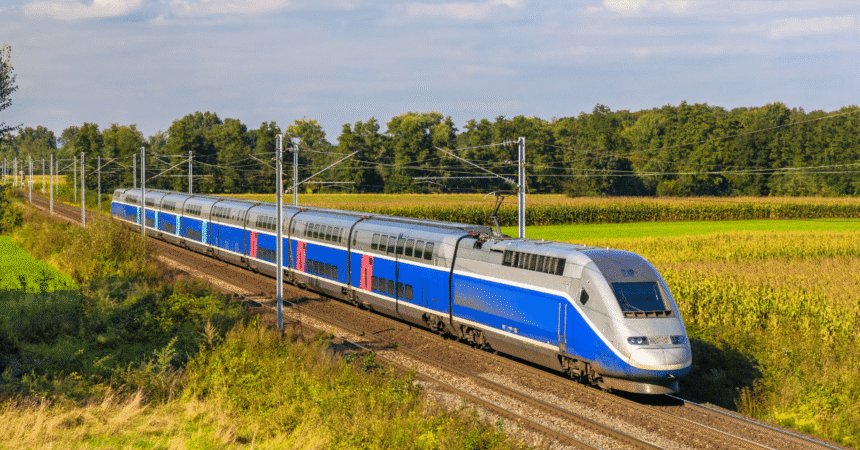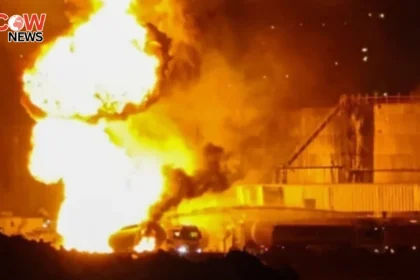Pakistan is gearing up for a transformative step in its transportation infrastructure with plans for its first high-speed rail project, linking the bustling cities of Lahore and Rawalpindi. This ambitious initiative, which has already been proposed for approval to the Punjab Chief Minister’s office, aims to modernize travel between these two key urban centers and is set to redefine public transport in the country.
The High-Speed Rail Project
The Lahore-to-Rawalpindi high-speed rail link is projected to cost approximately $1.6 billion. Developed by the departments of transport and mass transit, the project promises to facilitate trains capable of reaching speeds of up to 250 km/h. This speed would dramatically reduce travel time between Lahore and Rawalpindi to less than two hours, providing a swift and efficient alternative to current modes of transportation, which are often plagued by delays and congestion.
Rationale Behind the Project
The motivation behind this project stems from several pressing needs:
- Traffic Congestion: Both Lahore and Rawalpindi are experiencing significant urbanization, leading to increased traffic congestion. The high-speed rail aims to alleviate the burden on existing road networks, providing a reliable and timely travel option.
- Economic Development: Improved connectivity between these major cities can facilitate trade, tourism, and commerce, boosting the local economy. A reliable rail link can stimulate investment and create jobs, benefiting the region as a whole.
- Environmental Considerations: Rail transport is generally more environmentally friendly than road transport. By promoting high-speed rail, Pakistan can reduce its carbon footprint associated with commuter travel.
- Modernization of Infrastructure: The project aligns with Pakistan’s broader vision to modernize its infrastructure, moving towards sustainable development and improved public transport systems.
The Role of the Pre-Feasibility Study
A crucial aspect of the proposal is the emphasis on preparing an action plan informed by a pre-feasibility study conducted by the railway department. This study is fundamental to assessing the viability of the project and will involve several key components:
Financial Viability
The pre-feasibility study will analyze the financial aspects of the project, estimating costs, revenues, and potential funding sources. This analysis is critical for attracting investment, as stakeholders will want assurance that the project is financially sound.
Technical Feasibility
Understanding the technical requirements necessary for implementing high-speed rail is essential. The study will evaluate the current railway infrastructure, identify necessary upgrades, and assess the technology required for high-speed operations.
Environmental Impact Assessment
Conducting an environmental impact assessment will help understand how the project may affect local ecosystems and communities. Addressing environmental concerns early on can mitigate opposition and ensure compliance with regulatory standards.
Risk Assessment
The study will also assess potential risks, including financial, operational, and environmental challenges. Identifying these risks early allows for the development of strategies to manage them effectively.
Financial Challenges and Opportunities
Despite the clear benefits, securing funding for the $1.6 billion project presents a significant challenge. Various financing options may be considered:
Public-Private Partnerships (PPPs)
Engaging the private sector through public-private partnerships can provide the necessary capital for infrastructure projects. By sharing risks and rewards, both public and private entities can collaborate to make the project viable.
International Investment
Attracting foreign investment can be crucial for funding large-scale projects. Pakistan may need to present a compelling case for investors by highlighting the economic benefits and potential returns on investment.
Government Funding
The government may allocate funds from its budget to support the project. However, this requires careful planning and prioritization within broader economic goals.
Multilateral Development Banks
International financial institutions, such as the Asian Development Bank (ADB) and the World Bank, often fund infrastructure projects in developing countries. Securing loans or grants from these institutions could provide essential financing.
Potential Impact on Transportation
If approved and successfully implemented, the Lahore-to-Rawalpindi high-speed rail project could have profound implications for the transportation landscape in Pakistan.
Reduced Travel Time
The most immediate benefit would be the reduction in travel time. Commuters currently facing long delays due to traffic congestion would have a reliable alternative, making daily commutes more manageable.
Economic Growth
Improved transportation links can stimulate economic activity by facilitating the movement of goods and people. Businesses would benefit from faster logistics, while tourists would find it easier to travel between major cities.
Enhanced Quality of Life
As travel becomes more efficient, residents in both Lahore and Rawalpindi may experience improved quality of life. Shorter commute times allow for more personal time, reducing stress and enhancing overall well-being.
Increased Tourism
A high-speed rail link can enhance tourism by making it easier for visitors to explore multiple destinations within Pakistan. This could lead to increased revenue for local businesses and attractions.
Planning and Regulatory Considerations
Successful implementation of the high-speed rail project will require meticulous planning and adherence to regulatory requirements.
Stakeholder Engagement
Engaging with local communities, businesses, and other stakeholders will be essential to gather support and address concerns. Public consultations can foster a sense of ownership and ensure that the project aligns with the needs of those it will impact.
Regulatory Approvals
The project will need to navigate various regulatory approvals at multiple levels of government. This process can be time-consuming, making it essential to start early and ensure compliance with all legal requirements.
Long-Term Maintenance Planning
Planning for the long-term maintenance of the rail system is crucial to ensure sustainability and reliability once the service is operational. This involves budgeting for ongoing operational costs, staff training, and equipment maintenance.
Technical Challenges and Solutions
Implementing a high-speed rail system presents several technical challenges that must be addressed.
Infrastructure Upgrades
Existing railway infrastructure may require significant upgrades to accommodate high-speed trains. This includes enhancing tracks, signaling systems, and stations. Comprehensive assessments will determine the extent of necessary modifications.
Safety Standards
Ensuring the safety of passengers is paramount in rail transport. The project must adhere to rigorous safety standards, involving the installation of advanced safety systems and training for operational staff.
Technology Implementation
High-speed rail technology involves sophisticated engineering. The project will require expertise in railway technology, necessitating partnerships with firms experienced in high-speed rail systems.
The Broader Context of Rail Development in Pakistan
The Lahore-to-Rawalpindi high-speed rail project is part of a larger trend toward modernizing transportation infrastructure in Pakistan. The government has recognized the importance of railways in promoting economic development and reducing reliance on road transport.
Historical Perspective
Pakistan’s railway system has a rich history, but it has faced challenges over the years, including underinvestment and outdated infrastructure. Recent efforts to revitalize rail transport, including the launch of new services and upgrades, reflect a commitment to improving this essential mode of transport.
Regional Comparisons
Many neighboring countries have successfully implemented high-speed rail systems, which serve as a model for Pakistan. For instance, India is developing its own high-speed rail links, and learning from their experiences can provide valuable insights for Pakistan’s project.
International Collaboration
Collaborating with international rail operators and experts can help Pakistan access technology and expertise needed to implement a successful high-speed rail project. This collaboration can also facilitate knowledge transfer and capacity building within the local workforce.
Community and Environmental Considerations
A project of this magnitude must also take into account community and environmental considerations.
Community Impact
Assessing how the project will affect local communities is vital. This includes understanding potential displacement issues, changes in land use, and the impact on local economies. Engaging with communities can help mitigate negative effects and foster support.
Environmental Sustainability
The environmental impact of the high-speed rail must be evaluated to ensure it aligns with sustainable development goals. Measures should be taken to minimize ecological disruption and promote environmental stewardship.
Looking Ahead: The Future of High-Speed Rail in Pakistan
As discussions around the Lahore-to-Rawalpindi high-speed rail project continue, it represents a pivotal moment for Pakistan’s transportation future. If successfully executed, this project could set a precedent for future rail developments across the country.
Expansion Opportunities
The Lahore-to-Rawalpindi link could serve as a springboard for further high-speed rail projects, connecting other major cities and regions in Pakistan. A robust rail network would enhance national integration and economic development.
Inspiring Future Generations
Success in high-speed rail could inspire a new generation of engineers, planners, and transportation professionals in Pakistan. As the country modernizes its infrastructure, it can also cultivate local talent capable of tackling future challenges in transportation.
The proposal for the high-speed rail link from Lahore to Rawalpindi is a transformative initiative that holds immense potential for Pakistan. By addressing the various challenges and opportunities presented by this project, Pakistan can enhance its transportation infrastructure, promote economic growth, and improve the quality of life for its citizens. With careful planning and collaboration, this high-speed rail project can pave the way for a more connected and prosperous future.
#HighSpeedRail #PakistanTransport #LahoreToRawalpindi #InfrastructureDevelopment #PublicTransport #EconomicGrowth #SustainableTransport #RailwayProject #FutureOfTransport







